1. Tiananmen Square
2. The Forbidden City
3. Temple of Heaven
4. The Summer Palace
Of course, I must also give a brief mention of Diao Yu Tai - A place not visited by many but I actually had that privilege to catch a glimpse of this interesting building.
And also decided to pay less touristy place like Temple of Sun Palace Park to see the real Beijing.
Decided to give Great Wall a miss till the next trip. Probably need to be fiitter first before embark on the walk.
Temple of Sun Palace Park
Temple of Sun Palace park, a national AAA tourist attraction and a historic site under national protection, is located on Ritan North Road, Chaoyang District, about 10 kilometers from the center of the city.
It is a spot of cultural interest in classical garden. Ritan, or Temple of Sun, was built in 1530, or the 9th year of Emperor Jiajing's reign in the Ming Dynasty. Before the People's Republic was founded, many pieces of ancient architectures had been vandalized or stolen. In 1951, the government of Beijing decided to turn it into a park. In 1956, Beijing Municipal Bureau of Parks requisitioned surrounding lands and expanded the park to 206,200 square meters, and opened it to the public.
Ritan (Temple of Sun) is one of the five altars, famous historic sites in Beijing. It was the place where the Ming and Qing emperors worshipped the god of the Sun. It covers an area of 206,200 square meters, of which 124,273.36 square meters are covered by greenery, 4,700 square meters covered by water, and 10,357 square meters covered by ancient architectures.
There are 44 ancient trees in the park. In the past few years, while maintaining its cultural traits, the park has been updated with modernized facilities.
The park has completed and opened to the public a children's amusement park and a fishing area. Since 1992, it has attracted large numbers of tourists with activities that are rich in culture, such as music festivals, flower shows in the spring, morning exercises performances, and adoption of ancient trees.
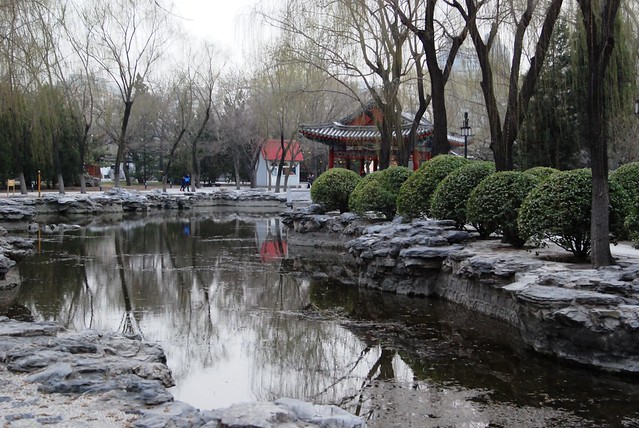
A glimpse of Beijing winter. Must say postcard kind of picture here
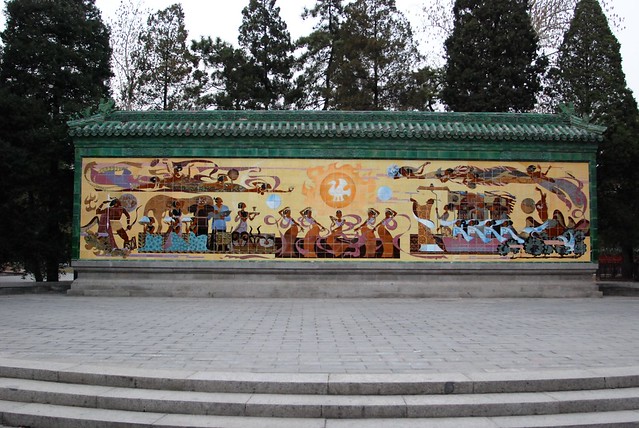 This is the popular Sun altar that we are talking about
This is the popular Sun altar that we are talking about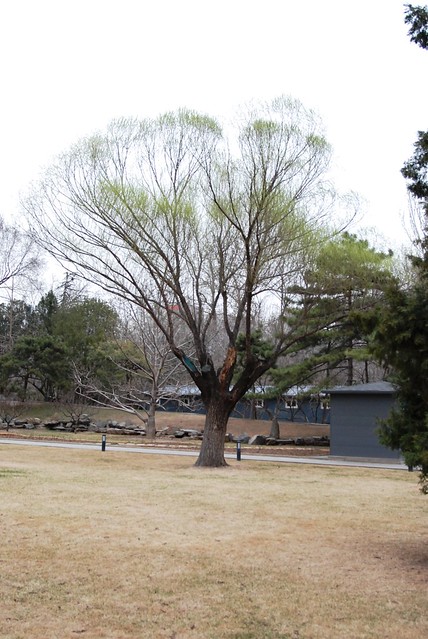
One of the ancient trees in the park.
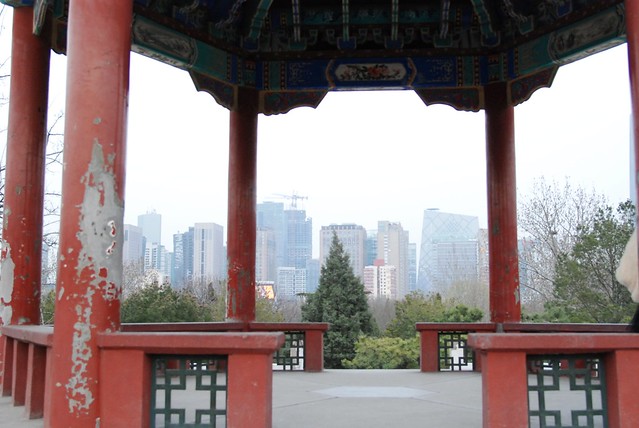 A pavilion overlooking the modern Beijing skyscrapers. A good blend between tradition and modernisation
A pavilion overlooking the modern Beijing skyscrapers. A good blend between tradition and modernisationThe park incidentally is just outside the foreign embassies hence the area is quite squeaky clean and neat
 This is outside the Bulgarian embassy. Seems the guard is not quite happy that I am taking a picture.
This is outside the Bulgarian embassy. Seems the guard is not quite happy that I am taking a picture.Tiananmen Square
Ah, the ever famous Tiananmen Square that was made famous in 1989 when a student stood in front of the tanks from People's Liberation Army.
The Tiananmen Gate to the Forbidden City was built in 1415 during the Ming Dynasty. Towards the demise of the Ming Dynasty, heavy fighting between Li Zicheng and the early Qing emperors damaged (or perhaps destroyed) the gate. The Tian'anmen square was designed and built in 1651, and has since enlarged four times its original size in the 1950s.[1][2]
Near the centre of today's square, stood the "Great Ming Gate", the southern gate to the Imperial City, renamed "Great Qing Gate" during the Qing Dynasty, and "Gate of China" during the Republic of China era. Unlike the other gates in Beijing, such as the Tiananmen and the Qianmen, this was a purely ceremonial gateway, with three arches but no ramparts, similar in style to the ceremonial gateways found in the Ming Dynasty Tombs. This gate had a special status as the "Gate of the Nation", as can be seen from its successive names. It normally remained closed, except when the Emperor passed through. Commoner traffic was diverted to two side gates at the western and eastern ends of today's square, respectively. Because of this diversion in traffic, a busy marketplace, called Chessgrid Streets developed in the big, fenced square to the south of this gate.
British and French troops who invaded Beijing in 1860 pitched camp near the gate and briefly considered burning down the gate and the entire Forbidden City. They decided ultimately to spare the palace and to burn instead the emperor's Old Summer Palace.
The main thing I first step down on this place is that the place is HUGE and full of tourists and thats only a weekday for you.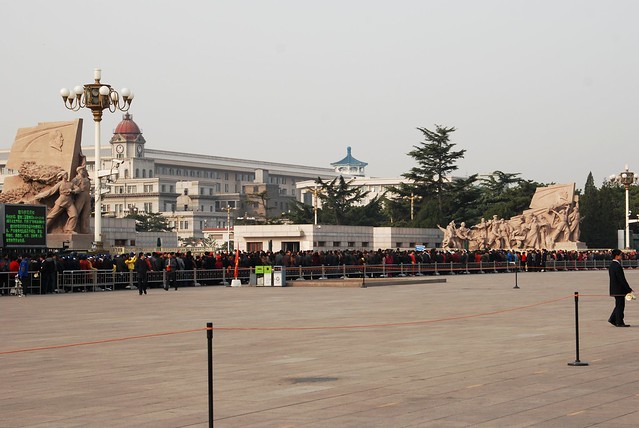 The long queue from out of towners waiting to catch a glimpse of Mao Zedong their beloved leader and founder of the Commuinist Party in China.
The long queue from out of towners waiting to catch a glimpse of Mao Zedong their beloved leader and founder of the Commuinist Party in China.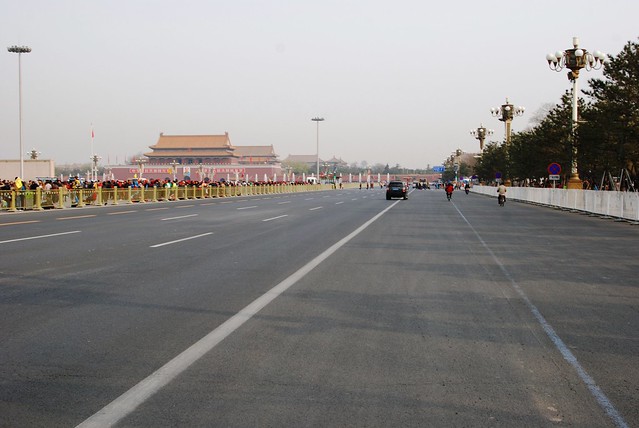 Everything is big in Beijing, from roads, to parks and squares !
Everything is big in Beijing, from roads, to parks and squares !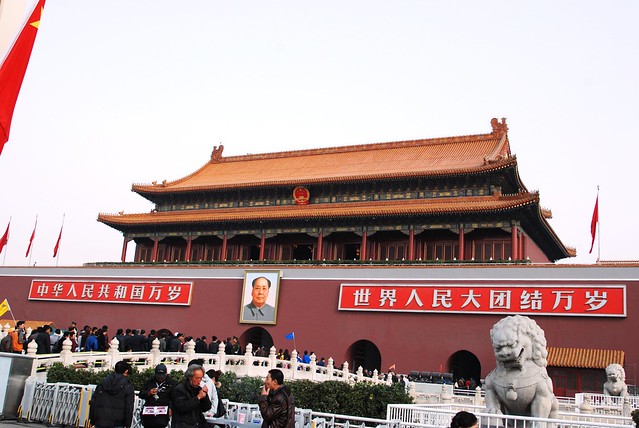 Of course, this scene is a 'must take' for anyone who visited Tiananmen Square
Of course, this scene is a 'must take' for anyone who visited Tiananmen Square
No comments:
Post a Comment